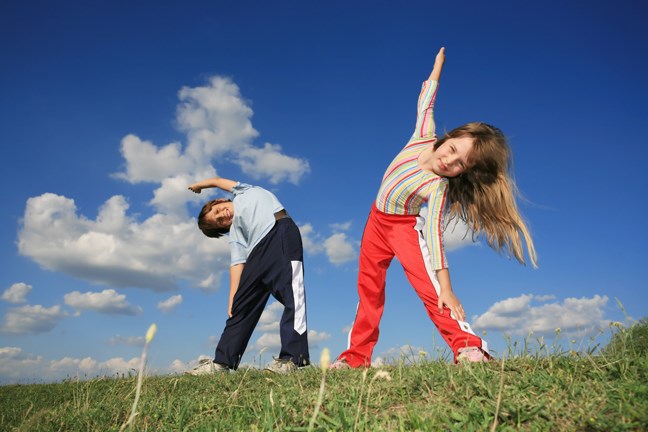Adding natural elements like sand, bricks and bamboo can transform a dull outdoor play space into an imaginative playground for children and even reduce signs of depression, according to a new UBC study.
This new information arrived on my desk this morning and caused me to think about my grandchildren and their responses to play spaces.
They love to go to playgrounds but in thinking about it I realized that they are as likely to play with the materials on the ground as the structures designed for their play. Making paths through the wood chips that make up the ground is a fun activity for them.
And even when they play on the structures, they are as likely to attack it in a new and creative way (sliding down upside down and backwards) as they are with the usual way.
Master’s student Sara Brunelle transformed two play areas at daycare centres in East Vancouver. She created subspaces or virtual rooms by simply using plants or potted bamboo as dividers. She also introduced greater variety and texture to the spaces through ornamental grasses, sand, bricks and water features.
When the researchers studied the kids’ activities on these playgrounds they noticed a measurable difference in their behaviour before and after. Before the changes the space was quite plain with just a play set or two.
Kids like to explore their environment. When they are babies their little hands touch everything in reach, particularly their parents’ and caregivers faces and bodies. Once they are out of an adult’s arms they touch, taste and smell anything they can handle.
When their play areas allow them to enjoy different spaces with varying natural elements they can be as creative and fanciful as they wish. They can use subspaces as caves, houses or a location for quiet time. Children also appeared to be happier playing in more diversified environments. A decline in depressive behaviours – measured using a popular assessment tool – was also observed.
“Depressive symptoms like looking sad or not smiling much went down after the modifications. Videos showed kids much more engaged in play and engaged in positive ways with each other,” said co-researcher Mariana Brussoni, a professor with UBC’s faculty of medicine and a scientist at the Child and Family Research Institute at B.C. Children’s Hospital.
Brussoni added that the kids became less dependent on their teachers in the new play spaces and interacted with the adults just seven per cent of the time, compared to 19 per cent before the redesign.
I have noticed the same dynamic. When I am in my grandchildren’s backyards, for the most part I am simply watching. They are busy moving sand and dirt, finding and using small twigs and stones or cooking a sand dinner in what they have defined as the outdoor kitchen under the stairs. They have places to climb, a kitchen set and a sand box, and they are in different areas of the yard.
“Our study shows that you don’t even need a huge budget to add nature into a space – you can be creative with a just a few inexpensive twists,” said Herrington.
I agree, kids love to react with nature and to have a space which allows creative play.
Kathy Lynn is a parenting expert who is a professional speaker and author of Vive la Différence, Who’s In Charge Anyway? and But Nobody Told Me I’d Ever Have to Leave Home. If you want to read more, sign up for her informational newsletter at parentingtoday.ca.



